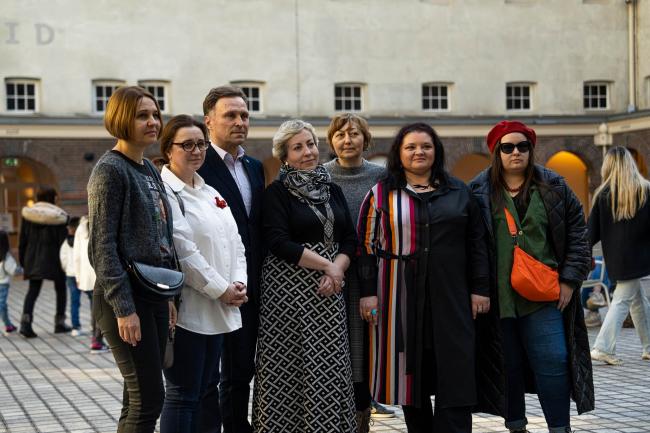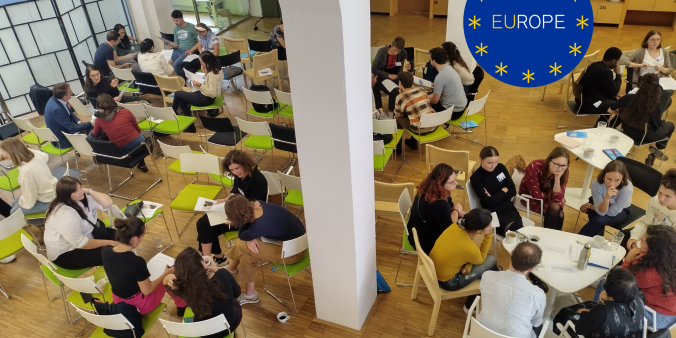
Effective International Cultural Policy: A Matter of Faith or Evidence?
Mette Kramer was a research trainee within the team of DutchCulture l International Cultural Policy & Coordination as part of her master’s programme on Cultural Leadership at the University of Groningen. This article is the second of two articles, based on her thesis. Due to the anonymity of the participants and the sensitivity of the data, only part of her thesis is added to the article.
“It is more a matter of faith than of evidence,” phrases Yudhishthir Raj Isar the impact of international cultural cooperation (ICP) in his research. Similarly, a former UK representative of the British Council strongly argues in favour of the various forms of cultural diplomacy, insisting that “the outcomes, although positive, cannot ultimately be pinned down”. The question then remains how goals formulated in international cultural policy can be assessed. Within my research, I focused on the role of European values within international cultural cooperation and analysed the possible impact and assessment of these values.
The matter of faith
Evaluation and monitoring determine when a set of goals are effectively fulfilled or not. It is still contested what the impact of arts and culture in international relations exactly is. It might be relatively straightforward to measure the outcome of a cultural intervention by numbers (how many people attended, how many cultural events abroad), but capturing the impact over a longer period is much more challenging. Measuring the impact of ICP is often related to achieving intangible effects, trust and influence for example. Moreover, impact cannot be isolated. In other words, it is difficult to ascertain whether a certain change in influence, affinity or likelihood to cooperate is achieved by the funded cultural events. Even if such interactions are tracked over time, there is still a challenge in establishing causality.
The matter of evidence
My first article, The Analysis of European Values, showed how they are not solely embedded within the content of cultural collaboration, but also part of the context and circumstances under which cultural projects take place. When aiming to foster (shared) European values, ICP can contribute through the space for dialogue and let different voices be heard. The policy not only supports the dialogical aspects during the artistic experiences themselves but also the practice of working together with professionals from different cultural backgrounds.
Building up networks and partnerships is seen as vital for international cultural cooperation. The networks that cultural professionals can tap into are the foundation of an effective ICP. These can create meaningful encounters and exchanges within the process, which could later develop further during the presentation of artistic projects. The efficacy of ICP concerning European values is therefore reflected in the notion of respect and diversity rather than the promotion of those values as subject matter.

From policy to practice
From my research, it became clear that there is no straightforward answer to the question of effective translation from policy to practice. There is no list of steps that would ultimately lead to impactful cultural collaboration (ergo effective ICP). There is no one-size-fits-all method for understanding the impact of ICP. However, it is important to commit to an evaluation that collects data at various points and levels during the process of international cultural cooperation. This is as much about the outcomes as the structure. An evaluation of ICP should therefore include a few different assessments.
First, one that assesses artistic quality through the number of international cultural projects, media coverage, awards and best examples. Next, an assessment could be included that assesses the personal value of cultural projects through audience and participant surveys. Third, a broader impact analysis could be included that looks at economic, social and diplomatic impact. An assessment that could be done through a theory of change, documenting the actual changes one sees during and after a project. Lastly, an evaluation should include an assessment of the process, taking into account the organisational factors. These should indicate the potential for sustainable and equal cooperation in the future, for example taking into account a bottom-up approach, the level of involvement and shared responsibility by all participants in the project, staff capacity and a healthy fiscal structure.
Inclusion of criteria
An effective ICP does not necessarily have to be a matter of faith, but the inclusion of certain criteria in the process could already indicate successful cooperation. Further examination is needed to make conclusions as to whether the inclusion of criteria such as fair dialogue, mutual interest and respect within the process of international cultural cooperation could ultimately contribute to the desired outcomes. A sophisticated and critical evaluation that focuses both on the impact and the process could help in this. In the end, it would not necessarily mean that their inclusion always leads to valuable outcomes in social/economic/diplomatic terms. However, those elements could be considered crucial when indicating successful cultural collaborations.



